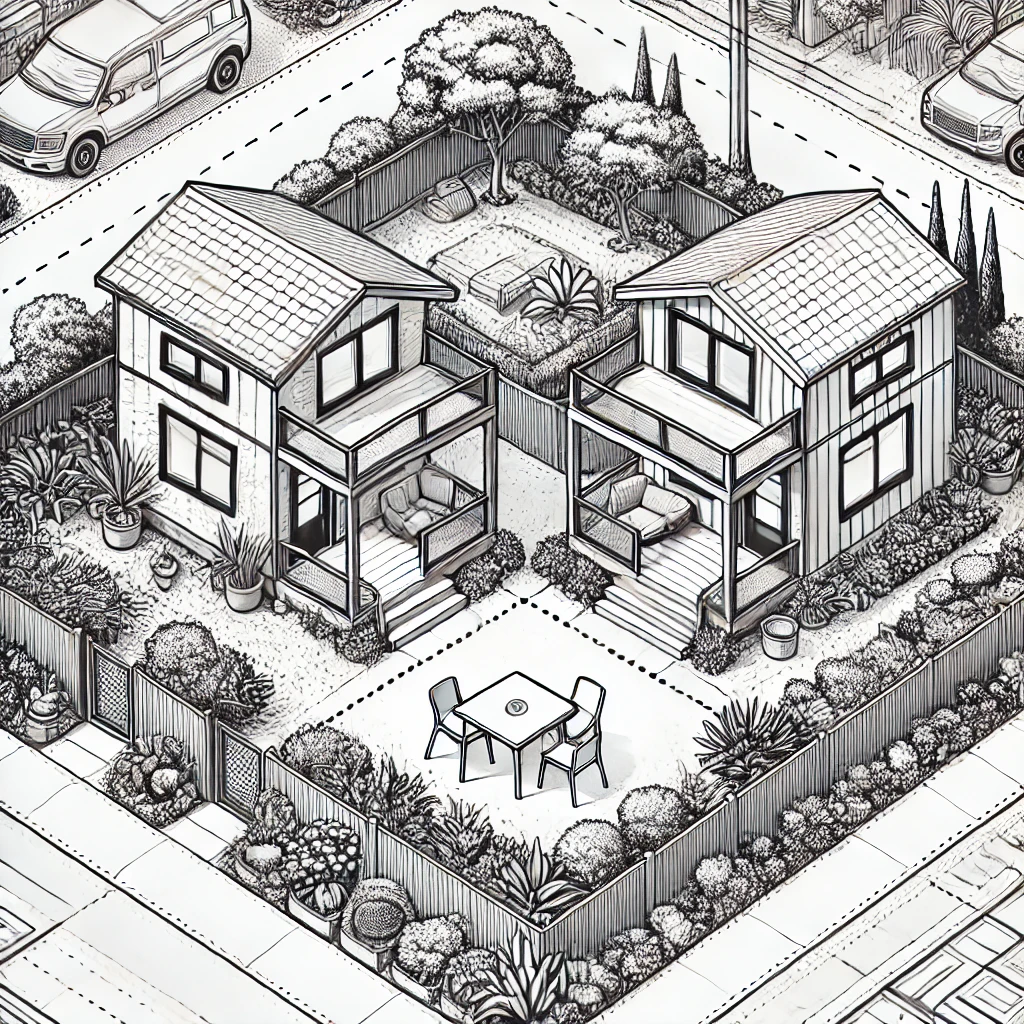In California, homeowners have new ways to expand their properties with Accessory Dwelling Units (ADUs) and Senate Bill 9 (SB9).
While both options allow for adding living space, they serve different purposes and come with distinct regulations.
Understanding these differences is key to making the right choice for your property.
What Are ADUs?
Accessory Dwelling Units (ADUs) are secondary housing units built on the same lot as a primary residence.
They can be detached, attached, or conversions of existing spaces like garages. ADUs offer flexibility for homeowners, providing rental income or additional space for family members.
ADUs are subject to a lot of different restrictions and zoning laws. This includes things like size, setbacks, and other considerations.
What Is SB9?
Senate Bill 9, passed in California in 2021, allows homeowners to subdivide their single-family residential lots and build up to two residential units on each resulting lot, including duplexes and fourplexes.
SB9 essentially allows for two actions on single-family residential lots:
- The lot can be split into two parcels which can be sold or developed independently. These need to be at least 1,200 sq ft each.
- The single-family home can be converted into a duplex, or another single-family home can be added to the same lot without a split.
Unlike ADUs, SB9 aims to increase housing density by allowing multiple primary residences on a lot, not just secondary units.
Key Differences Between ADUs vs SB9
To get a better idea of ADUs vs SB9, let’s see how the two compare.
Purpose and Flexibility
ADUs come in many shapes and sizes. From custom detached ADUs used for rental income to garagec conversions that house extended family members, there is a lot of flexibility in use,
SB9, on the other hand, is a bill passed specifically to allow for lot splits and additional primary units.
Zoning and Approval (The Boring Stuff)
ADUs are subject to local zoning laws, and can typically be approved quickly, especially if a pre-approved design is used.
SB9 developments, however, involve lot splits and the creation of new primary residences, which tends to be a lot more complex.
Design and Size
ADUs have strict size limits, usually capped at 1,200 square feet (this depends on the jurisdiction).
SB9 developments are much more flexible in this sense.
They allow for the construction of multiple full-sized homes as long as the project adheres to local regulations.
Sales
Usually, ADUs cannot be sold separately to the main unit, but state laws have allowed cities to decide if they want to do so (learn more here).
SB9 lots, however, can be sold separately with or without dwellings on them.
Owner Occupancy
ADUs do not require owner occupancy, whereas SB9s do for three years.
Multifamily Considerations
ADus can be built on multifamily zoned properties, whereas SB9 is only applicable to single-family zoned properties.
Getting Approval: ADUs vs. SB9
Securing approval for an ADU tends to be faster due to state mandates that streamline the process.
ADU designs are often pre-approved in some cities, which speeds things up. However, since SB9 involves lot splits and multiple units, the approval process is more involved and can take longer, with more requirements to meet.
This is reflected in the data as well, with ADU approvals far outweighing SB9 project approvals.
Cost Considerations
Building an ADU is generally less expensive than undertaking an SB9 project.
ADUs typically involve converting existing spaces or adding a smaller structure, while SB9 projects may require substantial construction and infrastructure changes, particularly when splitting a lot.
Extra SB9 Considerations
SB9s face quite a few upfront hurdles that might prevent you from going ahead with the project even if you wanted to:
- SB9 requires an agreement that the property owner will live on one of the lots for at least 3 years.
- Finance solutions can be difficult to find as SB9 projects are still quite new and not very popular.
- Rented houses cannot be demolished.
- High-risk areas are not permitted for SB9 use.
Keep these in mind, as it could mean that your potential SB9 project is not as realistic as you thought.
So That’s It
Choosing between an ADU and an SB9 development depends on your goals.
The precedent for ADUs is already there, and they’re much easier to get approved and built than an SB9 project.
There is still a place for SB9, but we’ll be watching the space closely to see how this develops over the next few years.
